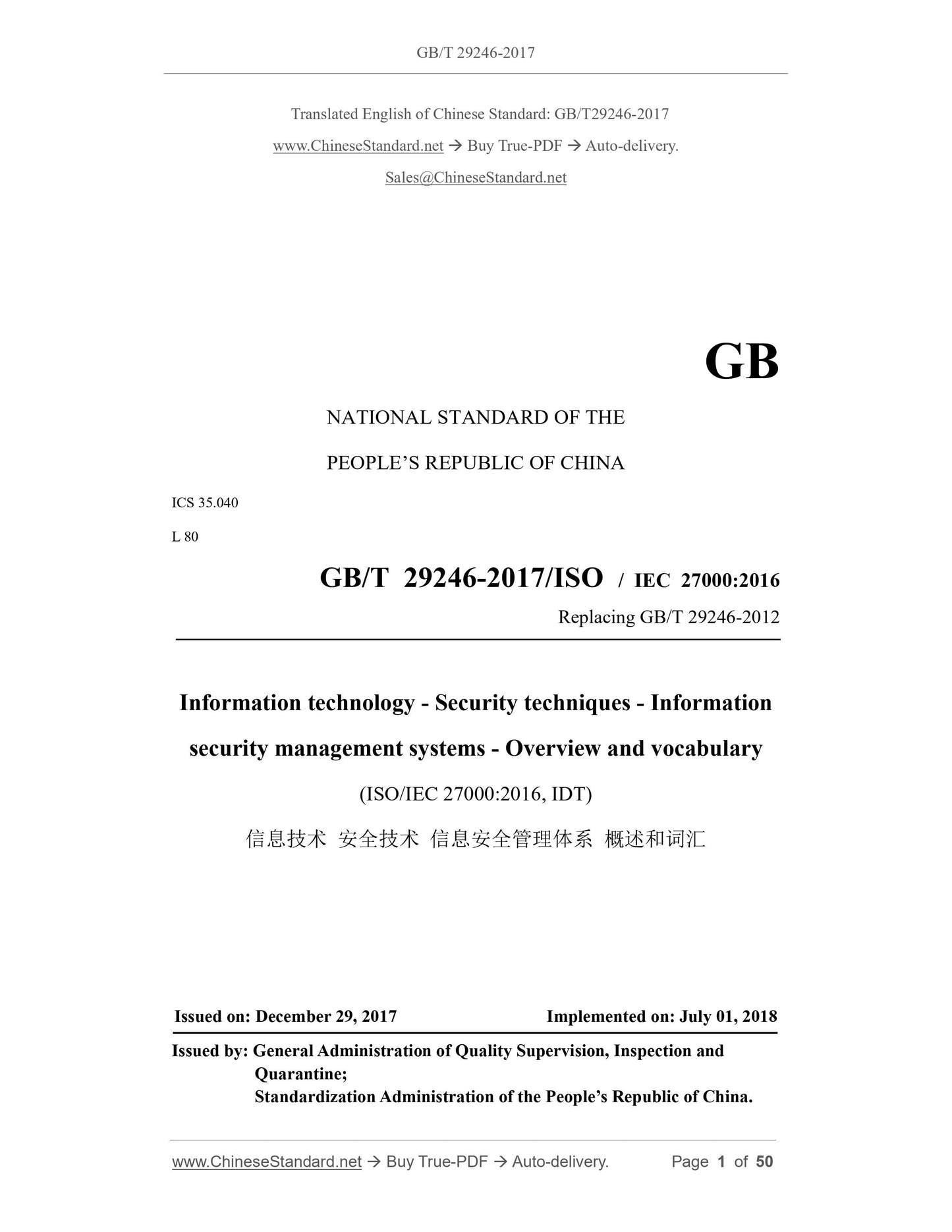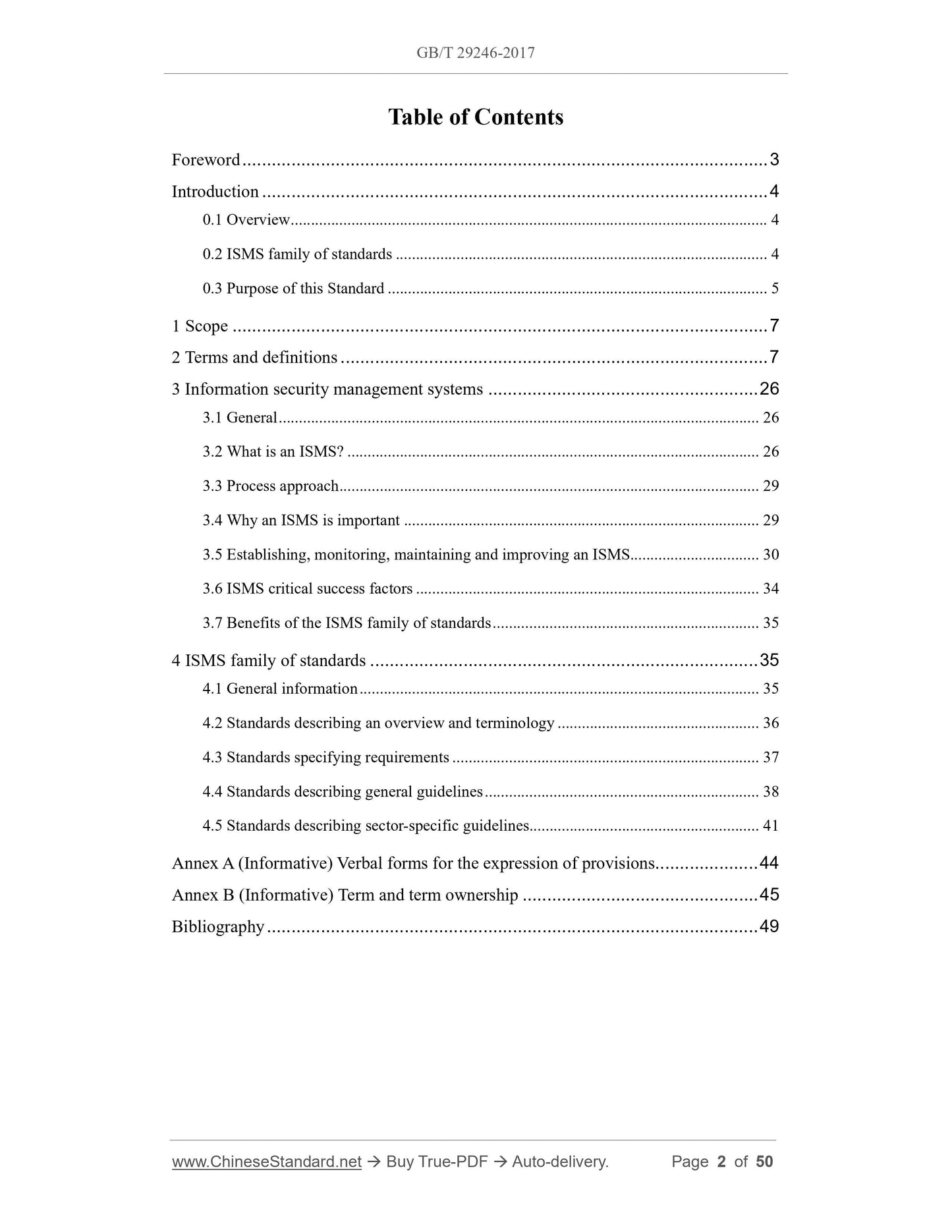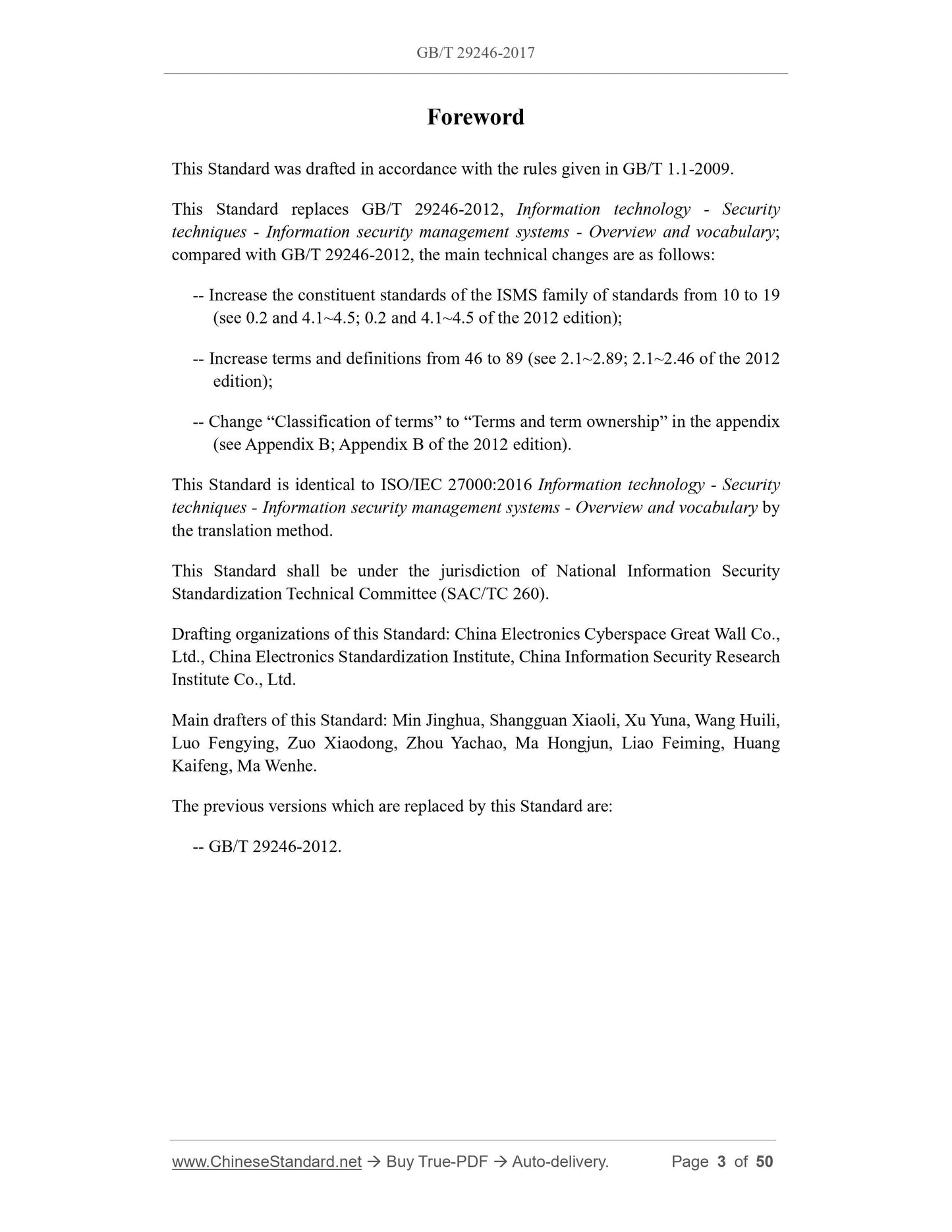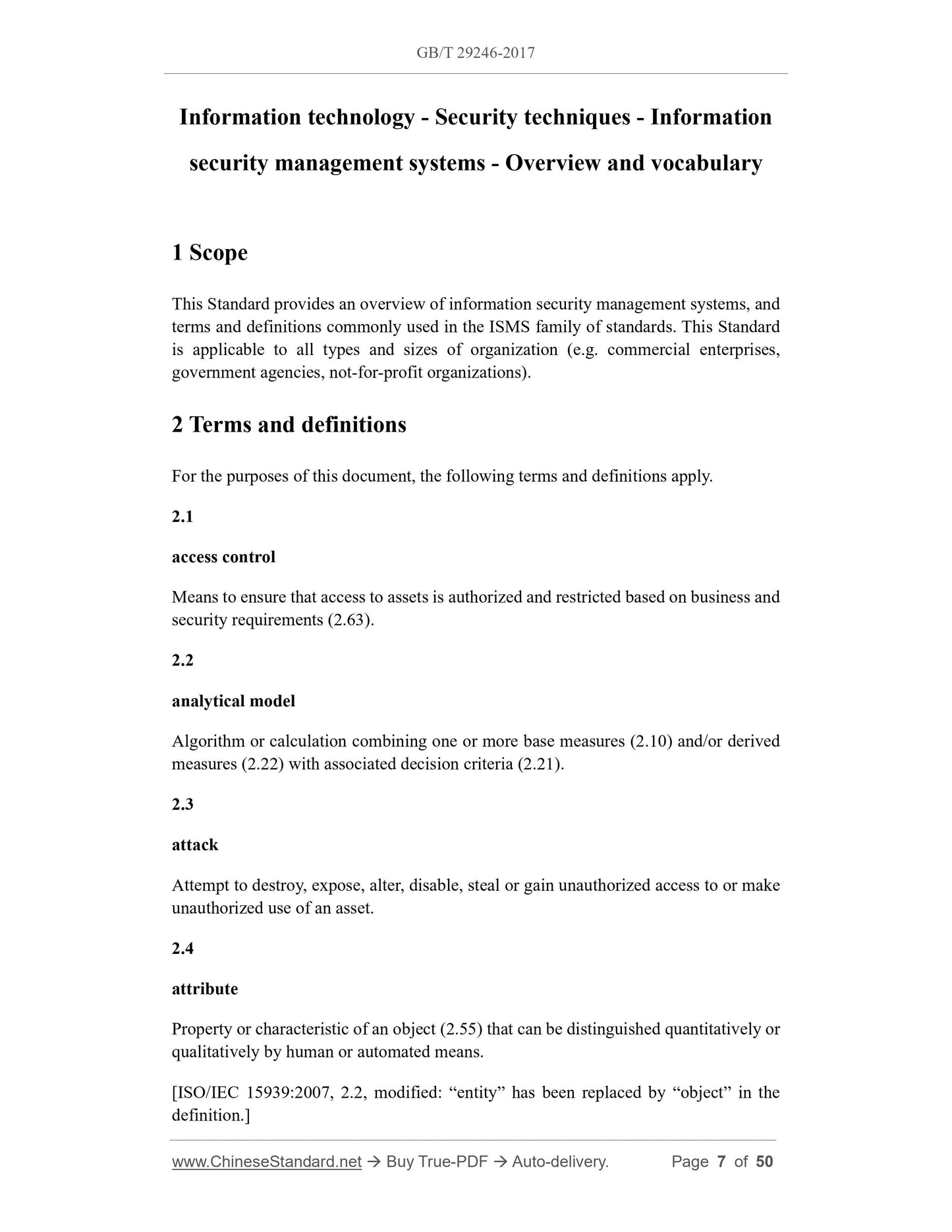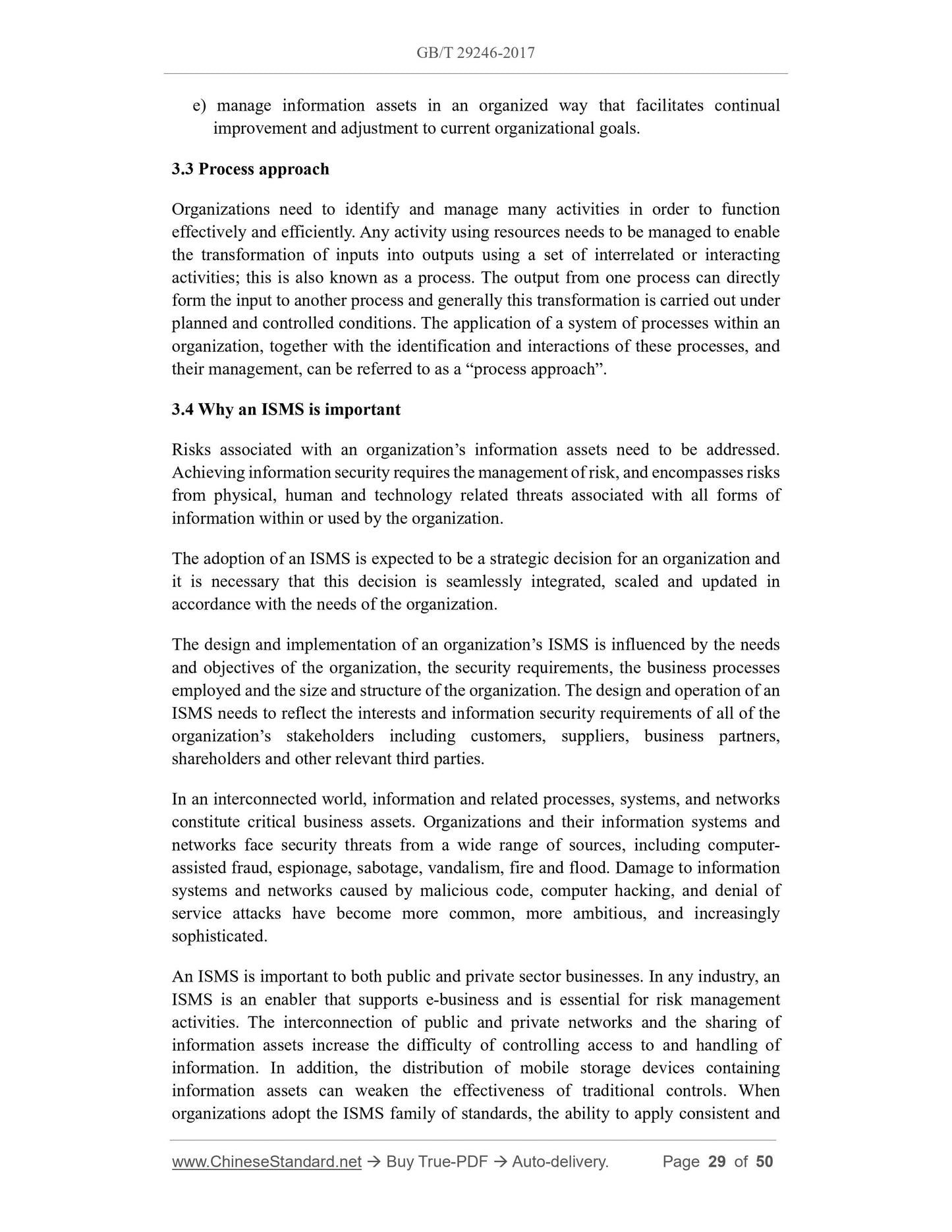1
/
of
5
PayPal, credit cards. Download editable-PDF and invoice in 1 second!
GB/T 29246-2017 English PDF (GB/T29246-2017)
GB/T 29246-2017 English PDF (GB/T29246-2017)
Regular price
$500.00
Regular price
Sale price
$500.00
Unit price
/
per
Shipping calculated at checkout.
Couldn't load pickup availability
GB/T 29246-2017: Information technology -- Security techniques -- Information security management systems -- Overview and vocabulary
Delivery: 9 seconds. Download (and Email) true-PDF + Invoice.Get Quotation: Click GB/T 29246-2017 (Self-service in 1-minute)
Newer / historical versions: GB/T 29246-2017
Preview True-PDF
Scope
This Standard provides an overview of information security management systems, andterms and definitions commonly used in the ISMS family of standards. This Standard
is applicable to all types and sizes of organization (e.g. commercial enterprises,
government agencies, not-for-profit organizations).
Basic Data
| Standard ID | GB/T 29246-2017 (GB/T29246-2017) |
| Description (Translated English) | Information technology -- Security techniques -- Information security management systems -- Overview and vocabulary |
| Sector / Industry | National Standard (Recommended) |
| Classification of Chinese Standard | L80 |
| Classification of International Standard | 35.040 |
| Word Count Estimation | 34,399 |
| Date of Issue | 2017-12-29 |
| Date of Implementation | 2018-07-01 |
| Issuing agency(ies) | General Administration of Quality Supervision, Inspection and Quarantine of the People's Republic of China, Standardization Administration of the People's Republic of China |
Share
